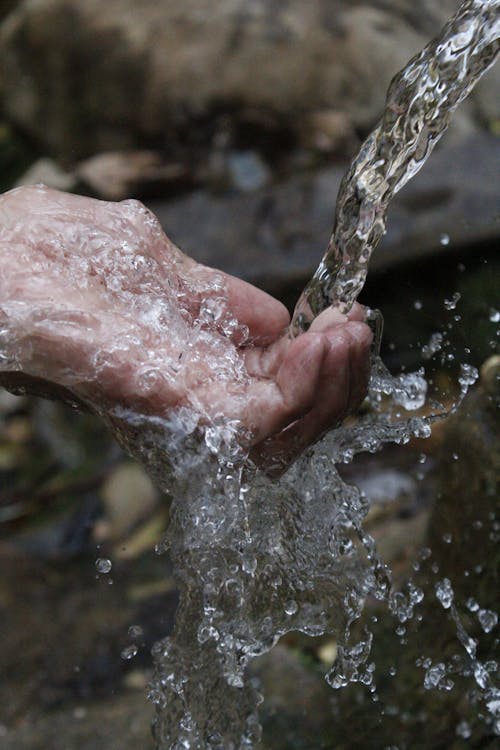An In-Depth Look at the Journey from River to Tap
Edmonton is known for its vibrant arts scene and lush river valley but perhaps less famously for its reliable and high-quality drinking water. But have you ever wondered where this water comes from and how it’s made safe to drink? Let’s dive into the fascinating journey of how Edmonton transforms raw river water into the clean, safe water that flows from your tap.
The Source: The North Saskatchewan River

Edmonton’s primary source of drinking water is the North Saskatchewan River, which winds through the city, carving out the expansive river valley that Edmontonians cherish. Originating from the Columbia Icefield in the Canadian Rockies, the river travels approximately 1,287 kilometres before it merges with the Saskatchewan River. Along the way, it collects water from tributaries, runoff, and, unfortunately, various pollutants. As a result, the water that reaches Edmonton isn’t immediately safe for consumption.
The Challenge: Raw Water to Drinking Water
River water, by its nature, contains numerous contaminants—both natural and human-made. These can include sediments, organic matter, bacteria, viruses, heavy metals, and chemicals from agricultural runoff. Transforming this raw water into something drinkable requires a sophisticated, multi-step treatment process, carried out by EPCOR, the company responsible for managing Edmonton’s water supply.
The Treatment Process: Making River Water Safe to Drink
- Intake and Screening:
The first step in water treatment begins at the river itself. Water is drawn from the North Saskatchewan River through intake pipes located at the E. L. Smith and Rossdale Water Treatment Plants. Large debris such as sticks, leaves, and other floating material is removed by screens at the intake points, ensuring that the water entering the treatment plant is free from large, obstructive objects. - Coagulation and Flocculation:
Once the water is inside the treatment plant, it undergoes coagulation. During this stage, chemicals called coagulants (typically aluminum or iron salts) are added to the water. These chemicals cause small particles, such as dirt and bacteria, to clump together into larger clusters known as flocs. The water is then gently stirred in a process called flocculation, which encourages these flocs to grow bigger and heavier. - Sedimentation:
After flocculation, the water is moved to sedimentation basins, where the flocs have time to settle at the bottom of the tank. This process removes a significant amount of the suspended solids from the water. The clearer water, now free of the settled flocs, is then directed to the next stage of treatment. - Filtration:
The water then passes through filters made of layers of sand, gravel, and sometimes activated carbon. These filters trap any remaining particles, including microscopic organisms that escaped the earlier steps. Filtration significantly improves the clarity of the water and removes a substantial portion of the remaining contaminants. - Disinfection:
Even after filtration, some microorganisms, such as bacteria and viruses, may still be present. To eliminate these, Edmonton’s water treatment plants use disinfectants, primarily chlorine. Chlorine effectively kills or inactivates harmful pathogens, ensuring that the water is safe for consumption. In some cases, ultraviolet (UV) light or ozone may also be used as supplementary disinfection methods. - pH Adjustment and Corrosion Control:
The treated water’s pH is carefully adjusted to prevent it from being too acidic or too alkaline, which could lead to corrosion of pipes and infrastructure. A stable pH level also helps to maintain the effectiveness of chlorine as a disinfectant. Chemicals like lime or sodium hydroxide are added to achieve this balance. - Fluoridation:
Edmonton adds fluoride to its drinking water, a practice supported by many health organizations for its benefits in reducing tooth decay. The fluoride levels are strictly regulated to ensure they remain within safe limits. - Storage and Distribution:
Finally, the treated water is stored in reservoirs before being distributed through a vast network of pipes that deliver it to homes, businesses, and industries across Edmonton. Continuous monitoring and testing are conducted to ensure that water quality remains high as it travels through the distribution system. - Note: this information comes directly from the EPCOR website and is current as of August 2024. This information may change without notice.
Ensuring Ongoing Water Safety
Water safety doesn’t end at the treatment plant. EPCOR conducts regular testing of the water at various points in the distribution system to ensure that it remains safe as it travels to your tap. These tests check for contaminants such as bacteria, chlorine levels, and other chemical properties, ensuring that the water continues to meet stringent safety standards.

Environmental and Community Considerations
Edmonton is fortunate to have a reliable source of water in the North Saskatchewan River, but this resource isn’t infinite. The city and EPCOR work together to promote water conservation, protect the watershed, and ensure that the river remains a viable source of drinking water for future generations. This includes everything from encouraging responsible water use to monitoring the environmental impact of human activities on the river.

A Remarkable Journey
The journey of Edmonton’s drinking water, from the North Saskatchewan River to your tap, is a complex and highly regulated process. Each stage is carefully designed to remove impurities, eliminate harmful pathogens, and ensure that the water is safe, clean, and pleasant to drink. The next time you pour yourself a glass of water, take a moment to appreciate the intricate system that makes it all possible—a system that blends advanced science, careful management, and a deep commitment to public health.
Understanding where our water comes from and how it’s treated is crucial to appreciating this essential resource. Edmonton’s water treatment process is a testament to the city’s dedication to providing its residents with some of the best drinking water in the world. Want more information on how to make the most of your drinking water? Reach out to us today to find out more about how you can get the best drinking water possible.